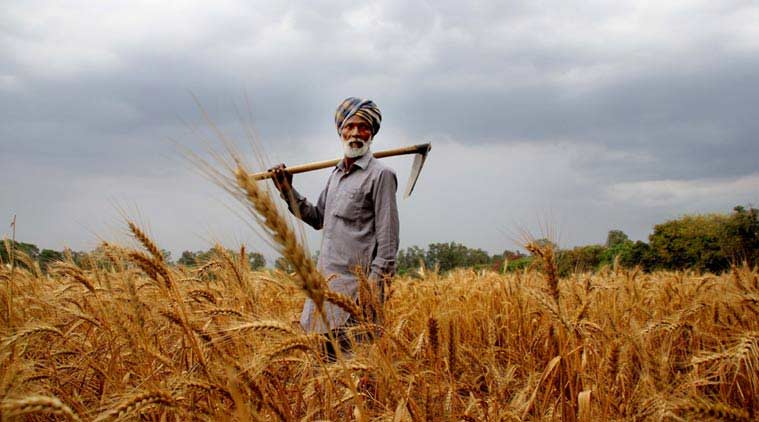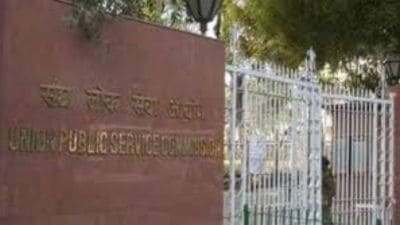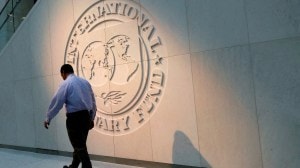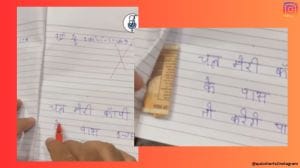- India
- International
Agriculture, power, auto pressure adds to cloud of bad loans
The State Bank of India leads with sanctions of Rs 3,965 crore, followed by Bank of India and Bank of Baroda, with amounts sanctioned of over Rs 1,200 crore each, according to government data updated till December 2015.
 Agri-loan waivers across states, such as Uttar Pradesh, Madhya Pradesh and Maharashtra, which have begun to impact banks’ loan books. (Representational image)
Agri-loan waivers across states, such as Uttar Pradesh, Madhya Pradesh and Maharashtra, which have begun to impact banks’ loan books. (Representational image)
The Centre’s offensive against bad loans of banks notwithstanding, a fresh wave of potential non-performing assets (NPAs) is looming on the horizon.
Among the emerging triggers, there are at least three pressure points, according to official data examined by The Indian Express:
# Agri-loan waivers across states, such as Uttar Pradesh, Madhya Pradesh and Maharashtra, which have begun to impact banks’ loan books.
# The increasing trend of state governments renegotiating power purchase agreements signed with renewable and thermal generators.
# Falling income of taxi drivers working for cab aggregators, which has forced some of the country’s biggest lenders to cut back on new car loans and tweak underwriting norms for this category — one of the fast-growing segments in the auto loan sector over the last five years.

Banks, led by the Indian Banks Association, are in the process of petitioning the Centre over the increasing trend of distribution utilities (discoms) in states, such as Rajasthan and Tamil Nadu, reportedly curtailing solar and wind power generation, alongside randomly issued instructions to back down — asking generators to unplug from the grid.
Discoms in Tamil Nadu, Madhya Pradesh, Maharashtra and Rajasthan are also reported to be delaying payments to generators of wind and solar power by 6-12 months, putting the cash flows of most of the smaller renewable firms under severe stress. Adding to their woes is the fact that states such as Tamil Nadu, Uttar Pradesh, Andhra Pradesh, Rajasthan and Madhya Pradesh are moving to renegotiate power purchase agreements of both renewable and thermal units.
In case of just renewable projects, at stake is over Rs 1.10 lakh crore lent by around 23 public sector and seven private sector banks and six Non-Banking Financing Companies (NBFCs) that have cumulatively committed financing of green projects worth 30,984 MW capacity, as on March 31, 2016.
The State Bank of India leads with sanctions of Rs 3,965 crore, followed by Bank of India and Bank of Baroda, with amounts sanctioned of over Rs 1,200 crore each, according to government data updated till December 2015.
Among private sector banks that have committed to financing RE projects, Yes Bank tops the list with a sanctioned amount of Rs 9,336 crore, of which Rs 4,878 crore had been disbursed till December 2015. IndusInd Bank and ICICI Bank had sanctions of Rs 4,617 crore and Rs 3,694 crore, respectively, for green projects while Axis Bank had sanctioned Rs 2,242 crore till December 2015, according to the latest available data with the Government.
Among NBFCs, state-owned Indian Renewable Energy Development Agency had sanctions of Rs 5,764 crore, while IIFCL and PFC followed with Rs 3,262 crore and Rs 1,821 crore, respectively, sanctioned till December 2015.
“The concerted move by state governments to renegotiate PPAs with developers and curtailment of generation by renewable energy producers will worsen an already precarious bad-loan situation for banks. The surge in lending by banks and FIs to renewable projects was done amid the Ministry of New and Renewable Energy obtaining achievement reports every quarter from these banks, and NBFCs and holding meetings with them from time to time,” said a senior bank executive privy to the IBA’s planned petition.
In response to these blockades, in the last 24 months, there were at least 19 petitions by more than half a dozen RE players — including ReNew Wind Energy, CLP Wind Farms, Orange DND Wind Power, Ostro Renewables, Clean Wind Power (Devgarh), Mytrah Vayu, Tanot Wind Power — alleging that states are frequently backing down renewable generation during the peak season citing grid security as the reason”. “The situation of state utilities forcing solar and wind units to back down continues to date,” an executive of one of the affected companies told The Indian Express.
Alongside this, the collateral impact of the agri-bank loan waivers could play out in the coming quarters, which could see more stress emanating that could further strain the loan books of banks.
HDFC Bank Ltd, which has so far done well on the bad loans problem as compared to competitors, reported a sharp surge in the gross non-performing assets (NPAs) ratio during the June quarter to touch the highest in seven years on account of farm loan waivers announced by states. HDFC Bank’s Rs 28,000-crore agri-loan portfolio was one of the main reasons for a rise in its gross NPA ratio to 1.24 per cent as at the end of the June quarter from 1.05 per cent in the previous quarter and 1.04 per cent in the corresponding quarter a year ago.
Deputy managing director Paresh Sukthankar indicated that the portfolio will have to be monitored as loan waivers are being finalised in many states, even as he emphasised that the stress was limited to only the farm portfolio and that its exposure to the microfinance segment has shown no signs of weakening further.
Bandhan Bank, which does not have a direct agri exposure, reported gross non-performing asset rising sharply to 0.82 per cent during the quarter ended June 30, 2017 as against the gross NPA of 0.38 per cent the preceding quarter. The bank’s managing director and CEO, Chandra Shekhar Ghosh attributed this to “payment indiscipline” arising from such waivers.
The RBI has already red-flagged the disastrous potential impact of the spate of loan waivers. As per the directions of RBI on priority sector lending, a target of 18 per cent of adjusted net bank credit or credit equivalent of off-balance sheet exposure has been prescribed to all Scheduled Commercial Banks (excluding regional rural banks) for agriculture.
Apart from the agri loans, the scare on the auto loan front is growing amid rising defaults by those working with ride-hailing companies, such as Ola and Uber, prompting lenders to cut back on car loans and modify underwriting norms.
The SBI, which had advanced over Rs 100 crore to drivers of the two cab aggregators, is reported to have stopped giving car loans to drivers in Bengaluru and is tightening the lending norms in other key markets. Other players are also reported to be beefing up its lending norms, industry sources said. Driver incomes are falling because cab aggregators had sharply cut down on incentives.
Bad loans — or NPAs — were about 9 per cent of total loans of all Indian banks in September 2016. At public sector banks, bad loans were 12 per cent of all advances while another 3 per cent of loans in the aggregate have been restructured.
Apr 16: Latest News
- 01
- 02
- 03
- 04
- 05






































